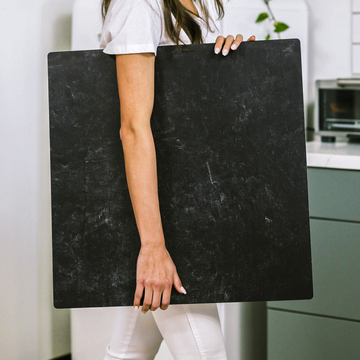If you run a creative business-whether you’re handcrafting jewelry, baking artisan treats, or selling small-batch skincare-product photos are your calling card. For many creators, the photography light box is the go-to solution for clean, distraction-free images. But did you know this simple box holds a world of untapped potential? Go beyond the basic how-tos and let’s explore the surprising science and art of mastering your light box.
Most articles stop at setup tips, but the real magic happens when you understand what’s truly going on inside that white cube. From the way light bounces around to the subtle influence of interior materials, learning to control these factors can transform your images from generic to extraordinary-even if you’re shooting from your kitchen table.
More Than Just Diffusion: How Your Light Box Shapes Light
It’s easy to think of your light box as little more than a fancy diffuser. In reality, its closed design has some fascinating effects on your photos:
- Multiple Reflections: The box’s inner walls scatter light in all directions, softly wrapping your product and minimizing harsh shadows.
- Even Exposure: Light bouncing around the entire interior means that objects placed at different depths are still evenly lit. This is especially helpful when shooting a flat lay or stacking different products in a scene.
Pro tip: Don’t always center your product. By moving it closer to a wall or the ceiling, you can introduce gentle falloff and subtle shadows, giving your images more depth without sacrificing clarity.
Why Surface Material Matters: Subtle Color Shifts Unveiled
All-white isn’t always all right! The coating or fabric inside your light box can actually tint your photos, sometimes in ways you won’t notice until post-editing.
- Optical Brighteners: Some fabric linings glow bluish under white LEDs, subtly messing with the colors in your products-especially earthy tones or skin shades.
- Ultra-Matte Neutrals: Premium light boxes, like the Replica Studio, use carefully chosen non-fluorescent materials to deliver true, reliable color every time.
Pro tip: If your subject is highly reflective-think metal, perfume bottles, or glass-try lining one edge out of frame with black velvet. This "negative fill" technique deepens shadows and eliminates distracting color casts, making textures pop dramatically.
Bringing Back Texture: Micro-Contrast and Shadow Play
Light boxes are praised for their smooth, low-contrast output, but sometimes you need your textures to come alive. Here are a few advanced tweaks:
- Use Flags: Place small pieces of black card just outside the scene to block light from specific angles. The resulting shadows create a three-dimensional, tactile appearance.
- Curved Backdrops: Slightly tilting or curving your background can change how light falls, creating dreamy gradients or subtle vignettes behind your product.
Pro tip: Photographing clear soaps or glassware? Mist a little distilled water into the air (away from your product) to add atmospheric haze. Watch as highlights diffuse and glass edges shimmer like a magazine ad.
Get Creative: Modularity and Micro-Studios
Most modern light boxes aren’t just limited to their default setup. With a little creativity, you can turn them into a full-scale mini studio:
- Add Extra Light Sources: Small LED panels or colored accent lights inside your box open up endless possibilities-split tones, color gradients, or bright, focused highlights.
- Zone the Box: Inserting dividers (like foam board) lets you control lighting in different parts of the scene. Create warm sunlight on one side, cool shade on the other-the only limit is your imagination.
Pro tip: Time-lapse yourself changing lights or backgrounds, and share the process as content. Buyers love to see the real work behind beautiful images and it strengthens your brand story.
Storytelling Inside a Cube: Breaking the Mold
Too many light box photos look generic. Instead, use the box itself as a framing device-a stage for your narrative.
- Shoot Close and Wide: Use a wide lens up close and let a corner of the box peek into the image. It can make your photos feel intimate and tactile, perfect for highlighting handmade or small-batch goods.
- Human Element: Include a hand adjusting your product or interacting with the scene. These action shots connect your audience to your process and make your brand feel alive.
Ready to Push Your Photography Further?
Your light box is so much more than just a tool to avoid bad lighting. It’s a customizable creative environment-a blank canvas for technical mastery and visual storytelling. Here’s how you can take your setup to the next level:
- Test your box’s color accuracy using a gray card-notice any subtle shifts, then compensate or upgrade materials as needed.
- Mix and match backgrounds, try out flags and extra lights, and pay attention to how each tweak changes the mood and accuracy of your product shots.
- Share your experiments. Let your audience into your process and watch as both your photography and your brand engagement grow.
Got a favorite light box hack or a burning question about advanced setups? Share it in the comments or tag us in your latest shot. Let’s keep raising the bar for product photos-one creative cube at a time.



